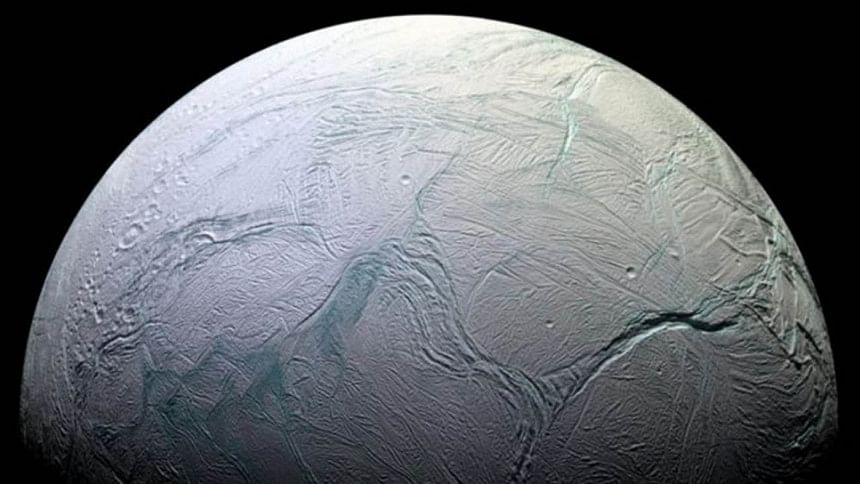Enceladus ocean 'must be global'

Scientists have determined that the sub-surface body of water on the Saturnian moon Enceladus must be far more extensive than first thought.
Using pictures from the Cassini probe, the researchers have detected and tracked a slight wobble in the moon.
After seven years of study, they have concluded this flutter would be much less if the icy crust was connected directly to Enceladus's rock core.
It is strong support for the idea of an intervening, global mass of liquid.
"If the surface and core were rigidly connected, the core would provide so much dead weight that the wobble would be far smaller than we observe it to be," said Matthew Tiscareno, a Cassini scientist based at the Seti Institute but previously affiliated to Cornell University, US.
"This proves that there must be a global layer of liquid separating the surface from the core."
Activity on Enceladus has been one of the great discoveries on the Cassini mission, which arrived at Saturn in 2004.
The first clue that something interesting was going on there was the detection of a disturbance in magnetic fields produced by the presence of what appeared to be an atmosphere.
Scientists quickly established that the moon was venting huge jets of water vapour through south polar surface cracks dubbed tiger stripes because their resemblance to the big cat's fur coat.
Models were subsequently produced to explain how liquid water could be maintained on a 500km-wide body in the outer Solar System, and how it might be feeding the jets.
But there has always been a debate about how large the hidden reservoir might be. Early thinking suggested it might only be a relatively small lens of water.
This new result, published in the journal Icarus, is the best evidence yet that the sub-surface sea is not regional in nature, but encircles the entire globe.
It is significant because it makes it more possible that Enceladus is a habitable world. In those jets, Cassini has also detected salts and organic molecules. The chemistry has scientists intrigued, and fired up to send a dedicated mission to the moon.
When that might happen is unclear. Both the US and European space agencies are only planning currently to send probes to Jupiter, and even they are not likely to get to their destination until the 2030s.

 For all latest news, follow The Daily Star's Google News channel.
For all latest news, follow The Daily Star's Google News channel. 



Comments